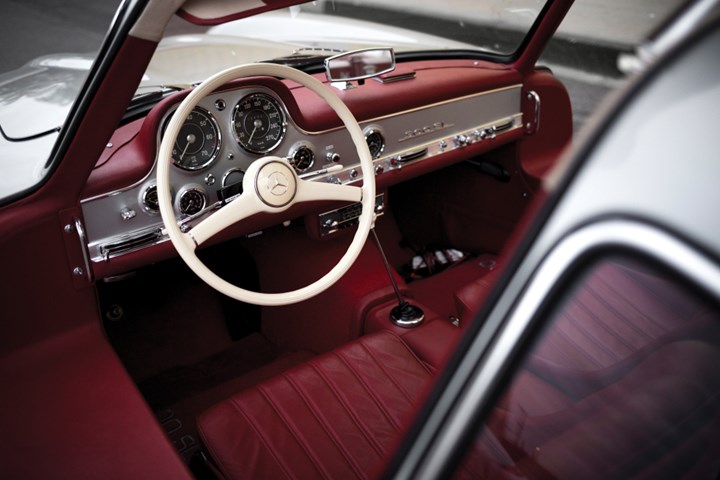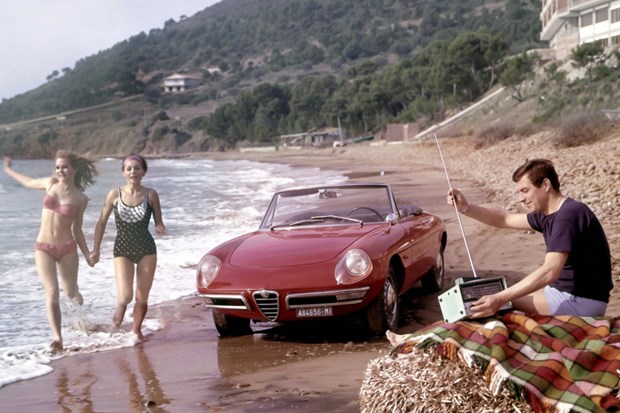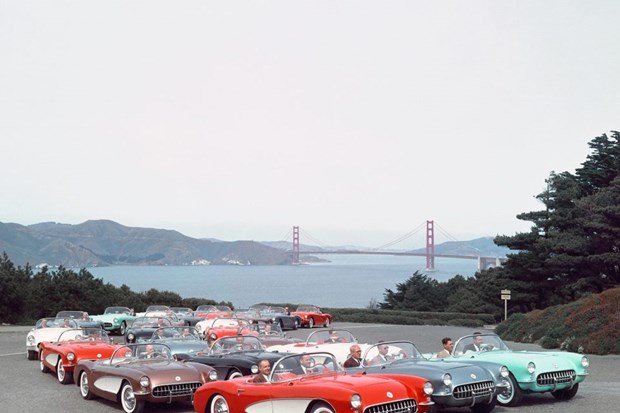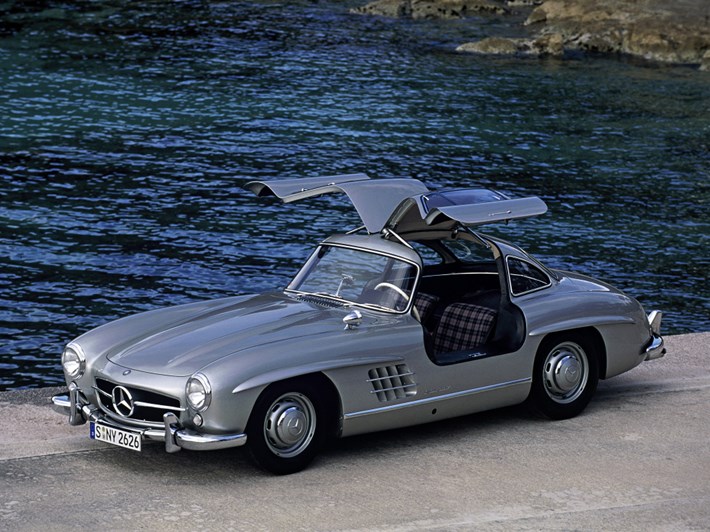
Faster, more efficient and more beautiful than any other car of its time, the Mercedes 300 SL is truly the car of all superlatives that never ceases to amaze. Even almost 70 years after its launch!
After a few years of inactivity, Mercedes decided to return to competition in 1952 with the W194, a sports coupé with a prominent tubular chassis that prevented the installation of conventional opening doors. For this reason, the engineers responsible for its design gave it doors cut into the top of the body and into the roof, which opened upwards. Called "Gullwing", they gave the car a very special look. Very light, particularly aerodynamic and fast, the car won the Carrera Panamericana and the 24 Hours proving the seriousness of its design. As an importer of Mercedes and Porsche in the United States, Max Hoffman saw the potential of this car and submitted the idea of developing a road version to the managers of the star brand. To show how much he believed in his project, he travelled to Stuttgart and committed himself to buying 1,000 examples. Seduced by this cash injection, the Mercedes management launched the design of this model in 1953. A year later, the car was exhibited at the New York Motor Show. Called the 300 SL (SportLeicht or Light Sport) because of its 3-litre capacity, it had a steel body and aluminium doors with a total weight of 1,285 kg. The more demanding customers could also opt for an all-aluminium body, but this would only save 80 kg. Sold at a much higher price than the normal 300 SL, only 29 all-aluminium examples were produced.
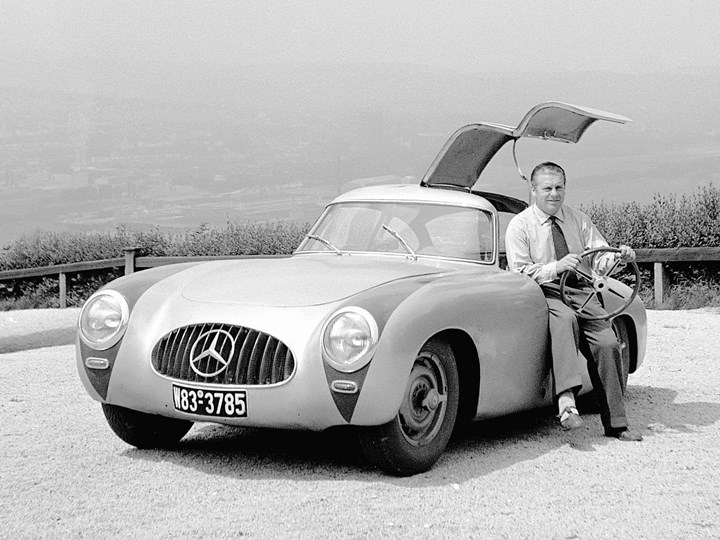
The ultimate
For reasons of rigidity, the gullwing doors were retained for the production model, but access to the car was not easy. To make it easier for the driver to sit behind the large steering wheel, it folds downwards. The small doors also do not allow the installation of descending windows, which limits the possibilities of ventilation in the cabin. Sold at a very high price, the 300SL was a technological showcase for Mercedes. Equipped with an independent rear suspension, it also introduced a new technology to the automotive world: a fuel injected engine. Developed by Bosch, this system, which usually saw duty in heavy trucks, gave improved performance and flexibility to the 6-cylinder block which developed 160kW, an impressive figure power for the time. Capable of reaching speeds of between 235 and 260 km/h depending on the axle ratio it was fitted with, the 300 SL is to be considered the first supercar in the history of the automobile. Between 1954 and 1957, 1,400 examples were sold, 80% of which were sold on the American market. A cabriolet version was also launched, without the gull wing doors but with a more advanced rear suspension design.
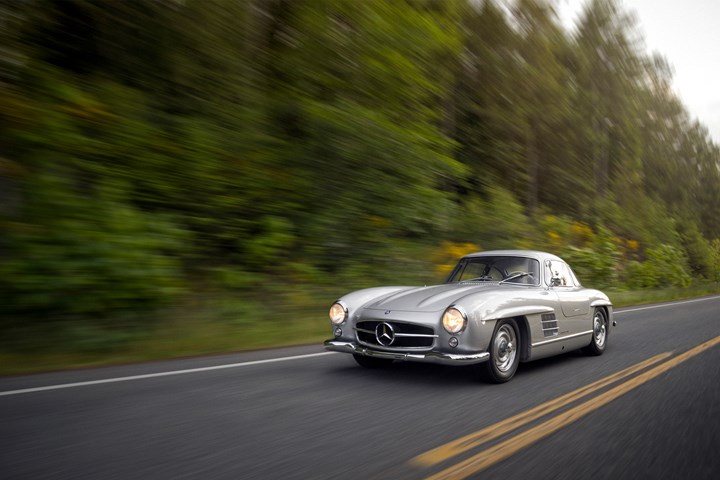
Sold for a fortune at the time, the 300 SL coupe has always been sought after. Event though its prices reached a peak a few years ago (close on R20 million for a restored example), it has always been valuable because of its singularity and rarity. Today, many specialists are able to restore these cars, although while parts are available, they are often extremely expensive. A new injection pump, for example, is worth the price of a small second-hand car! However, driving a 300 SL 'gullwing door' is a unique experience, even if it's hard to drive. This superlative sports car is considered to be one of the most beautiful ever designed.
